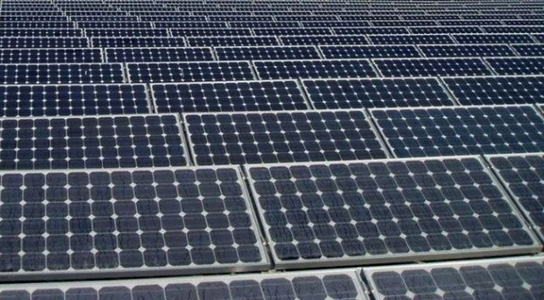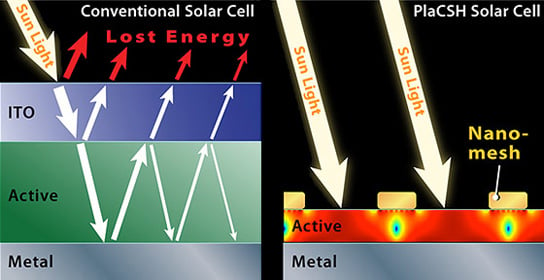
Researchers at Princeton University have used nanotechnology to develop a nanotechnological mesh that increases efficiency over organic solar cells nearly threefold.
The scientists published their findings in the journal Optics Express. The team was able to reduce reflexivity and capture more of the light that isn’t reflected. The resulting solar cell is thinner, less reflective and utilizes sandwiched plastic and metal with the nanomesh. The so-called “Plasmonic Cavity with Subwavelength Hole array,” or “PlaCSH,” reduces the potential for losing light itself and reflects only 4% of direct sunlight, leading to a 52% increase in efficiency compared to conventional, organic solar cells.

PlaCSH is capable of capturing large amounts of sunlight even when the sunlight is dispersed on cloudy days, which translates to an increase of 81% in efficiency in indirect lighting conditions. PlaCSH is up to 175% more efficient than traditional solar cells.
The mesh is only 30 nanometers thick and the holes in it are only 175 nm in diameter. This replaces the thicker, traditional top layer that is made out of indium-tin-oxide (ITO). Since this mesh is smaller than the wavelength of the light it’s trying to collect, it is able to exploit the bizarre way that light works in subwavelength structures, allowing the cell to capture light once it enters the holes in the mesh instead of letting much of it reflect away.
The scientists believe that the cells can be made cost-effectively and that this method should work for silicon and gallium arsenide solar cells as well.
Reference: “Ultrathin, high-efficiency, broad-band, omni-acceptance, organic solar cells enhanced by plasmonic cavity with subwavelength hole array” by Stephen Y. Chou and Wei Ding, 28 November 2012, Optics Express.
DOI: 10.1364/OE.21.000A60